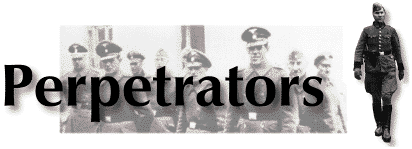
The National Socialist German Workers' Party or NSDAP , known as the Nazi Party, controlled Germany from 1933 to 45. Nazis labeled and isolated Jews, Gypsies, Slavs, homosexuals, political prisoners, and the mentally and physically disabled. Some were passively killed by starvation and widespread disease. Millions were murdered in attacks by the Gestapo
, the SA
, and the SS
, in mass killings of the Einsatzgruppen,
in and around Nazi concentration, and later death camps.
Although Adolf Hitler is often perceived as the chief perpetrator, there were others. Perpetrators were Nazi party leaders, bankers, professors, military officials, doctors, journalists, engineers, judges, authors, lawyers, salesmen, police, and civil servants. Perpetrators committed crimes against Jews and other undesirables for many reasons. They wanted power. They believed in an ideology of racial cleansing. They profited financially, displaced their anger from their own failures, or were perhaps "following orders."
Hitler's war against Germany's domestic enemies was waged with court decrees, a continuous flow of propaganda, and ever present violence.
Legal policies
Nazis began to whittle away at the rights of Jews and other party enemies soon after Hitler became Chancellor in January of 1933. One example is the treatment of German Jews. A series of laws were created banning "non-Aryans" from civil service, the legal, medical, and dental professions, teaching positions, cultural and entertainment enterprises, and the press. At the 1935 party rally, the Nuremberg Laws were announced, completing the disenfranchisement of the Jews. Jews no longer were German citizens; they were subjects. They were forbidden to marry Aryans and forbidden to fly the Reich and national flags. Jews were separated politically, socially, and legally from the Germans.
The full Nuremberg Laws are listed.
A third phase of restricting Jewish rights took place in 1938-39. In July 1938, Jews were required to carry identification cards. Later, Jewish children were banned from school and curfews were instituted. Jews were also excluded from businesses, parks, resorts, and forests. A one billion mark penalty was levied against the Jews for "the hostility of Jewry toward the German people and Reich...."
The list of discriminatory decrees against Jews as presented at the Nuremberg Trials.
Propaganda
Propaganda employs techniques which assume that the masses are not individuals capable of forming their own opinions. Propaganda relies on emotion rather than on logic, concentrates on a few points which are presented in simple terms, and then hammers those points repeatedly.
Adolf Hitler helped establish the Nazi party in 1920 and was the propaganda director of the Party before becoming its leader. In his book, Mein Kampf (My Struggle), written in 1924, Hitler wrote:
The function of propaganda is to attract supporters, the function of organization to win members... Propaganda works on the general public from the standpoint of an idea and makes them ripe for the victory of this idea....
Until 1929, the technical equipment available to the Nazi propagandists was rather primitive, so propaganda trucks carried posters and people shouting slogans. As microphones, loudspeakers, and other mass media developed, so did the sophistication of Nazi propaganda.
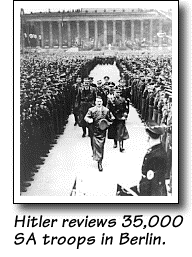 Hitler, a highly skilled orator, spoke at a number of mass rallies. These mass meetings created a sense of community, kept emotional levels high, and were a psychologically fertile environment in which to deliver propaganda. Rallies often took place in the evening when Hitler thought that people were most suggestible and least resistant. Carefully timed stage effects including: marching music, spotlights, torchlight processions, parades, flags fluttering, shouts of "Heil!," and impassioned oratory created the feeling of national unity, strength, and purpose.
Hitler, a highly skilled orator, spoke at a number of mass rallies. These mass meetings created a sense of community, kept emotional levels high, and were a psychologically fertile environment in which to deliver propaganda. Rallies often took place in the evening when Hitler thought that people were most suggestible and least resistant. Carefully timed stage effects including: marching music, spotlights, torchlight processions, parades, flags fluttering, shouts of "Heil!," and impassioned oratory created the feeling of national unity, strength, and purpose.
A series of quotes from Mein Kampf describes in greater depth Hitler's attitude about propaganda.
Propaganda was used throughout the Nazi Party's lifetime, in its rise to power and while Hitler was Führer . Several weeks after Hitler was named Chancellor, Joseph Goebbels
was appointed the Minister of People's Enlightenment and Propaganda. He had total control of radio, press, publishing, cinema, and the other arts.
The weekly newspaper, Der Stürmer, was an antisemitic newspaper with a circulation of around 500,000 at its peak in 1927. Julius Streicher, a friend of Hitler, was the founder of the antisemitic journal.
Samples of Julius Streicher's antisemitic remarks.
A
brief introduction to Der Stürmer from About.com.
Photographs of many examples of Nazi propaganda are also available at the Wiesenthal Center site.
Violence--terror and death
Hitler's philosophy about terror was clear-cut:We must be ruthless...Only thus shall we purge our people of their softness...and their degenerate delight in beer-swilling...I don't want the concentration camps transformed into penitentiaries. Terror is the most effective political instrument...It is my duty to make use of every means of training the German people to cruelty, and to prepare them for war...There must be no weakness or tenderness.
The SS (Schutzstaffelnor guard squadrons), the SA (Sturmabteilungor storm troops), the SD (Sicherheitsdienst des Reichsführers-SS or security service of the SS), and the Gestapo (Geheime Staats Polizeior Secret State Police) were all Nazi instruments of terror.
The SA was founded in 1921 as the Nazi Party militia. It lured new recruits with promises of adventure: participating in parades and secret meetings, painting slogans on buildings, fighting with opponents, and wearing the Brown Shirt uniforms. The SA recruited 15,000 members by 1923, and by the end of 1933, the SA was four-and-a-half million men strong.
The SS began in 1925 as a small personal guard unit to protect Hitler and other party leaders. It developed into the elite corps, the Black Shirts, under the direction of Heinrich Himmler. There were about 100,000 members in 1933. A power struggle occurred in 1934, called the "Night of the Long Knives," between the SA and the SS. The SS won. Himmler was made chief of the German police as well as the head of the SS, able to act within the law as head of the police and outside the law as head of the SS. Germany was truly a police state in which almost any act of terror could now be interpreted as legal.
The German people were in the hands of the police, the police were in the hands of the Nazi Party, and the Party was in the hands of a ring of evil men....Himmler established the Nazi Party's intelligence service in 1931, appointing Reinhard Heydrich as its chief. This section of the SS was created to uncover the Party's enemies and keep them under surveillance. After the outbreak of the war, the SD was assigned operational tasks, joined the Einsatzgruppen,and played a central role in organizing and implementing the "Final Solution."
--Prosecutor Jackson's Address to the International Military Tribunal
The Gestapo was composed of professional police agents, unlike the SS or SA. The Gestapo, in addition to their own agents, had block wardens, who kept close watch on the tenants of their block. The Gestapo was everywhere. Even a hint of criticism of the National Socialist Regime could result in arrest.
The Nazi party military and police agencies wielded their power violently, leaving a wake of terror and fatalities. Joseph Goebbels and Reinhard Heydrich orchestrated a night of terror in Germany, destroying synagogues, smashing windows of Jewish businesses and homes, looting, physically beating Jews, and arresting thousands of Jews who were then sent to concentration camps. On November 9 and 10, 1938, Kristallnacht,or "The Night of Broken Glass," was a turning point in the escalation of terror against Jews.
A series of photographs of the destruction of Kristallnacht.
Kristallnachtis explained in greater detail and the origin of the term is discussed.
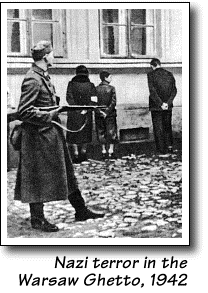 Concentration camps were a part of the perpetrators' systematic reign of terror. The SA and the SS units, during the first months following the Nazi seizure of power, established the camp at Dachau in March, 1933. Initially, Communists, Socialists, labor leaders, and other political opponents were the prisoners. Jews and homosexuals were sent next. By 1934, a unit of the SS, named the Death's Head Formations, was in charge of all the concentration camps. Prisoners were starved, forced into labor, tortured, and sometimes murdered in these camps.
Concentration camps were a part of the perpetrators' systematic reign of terror. The SA and the SS units, during the first months following the Nazi seizure of power, established the camp at Dachau in March, 1933. Initially, Communists, Socialists, labor leaders, and other political opponents were the prisoners. Jews and homosexuals were sent next. By 1934, a unit of the SS, named the Death's Head Formations, was in charge of all the concentration camps. Prisoners were starved, forced into labor, tortured, and sometimes murdered in these camps.
Following the successful German invasion of Poland in 1939, the Nazis had more than two million additional Jews under their administration. Heydrich was in charge of the Einsatzgruppen,(Special Duty groups), a military group which was responsible for implementing the Final Solution. In Poland, the Einsatzgruppenwere to move Jews from the countryside to larger cities, where ghettos were established. Their tactics included mocking, beard cutting, beating, torture, and arrest. As Jews were evacuated from the smaller towns, some were randomly seized from the streets and their homes, deported for forced labor, and brutally shot or beaten to death.
Scenes of executions by mobile killing squads and a map from an Einsatzgruppe report.
The deportation and "resettlement" of Jews and ghetto structure are thoroughly described. Primary source material is included.
Detailed information about the Einsatzgruppenis given with primary source material.
A growing collection of documents related to the Einsatzgruppenis available at this site.
The day after the army advanced into the Soviet Union in 1941, the Einsatzgruppenfollowed. Their task was to kill masses of Jews. From 1941-42, the Einsatzgruppenmassacred over one million Jews with guns or in mobile killing vans.
While the Einsatzgruppenmurdered Jews in the Soviet Union, Hitler constructed death camps to efficiently murder massive numbers of Jews in the rest of Europe. Hitler gave Himmler the task of creating the death camps. Six major annihilation camps were established in what is now Poland: Auschwitz, Chelmno, Belzec, Sobibór, Majdanek, and Treblinka. Trains transported Jews, first from the Polish ghettos, and then from France, Belgium, Holland, Norway, Austria, Czechoslovakia, Denmark, Greece, and Hungary. Each day, gas chambers killed thousands of Jews, whose bodies were then burned in huge crematoria and in open pits. Himmler's perverted logic twisted these unbelievable atrocities into acts of greatness:
Most of you know what it means when 100 corpses are lying side by side, or 500 or 1000. To have stuck it out and at the same time--apart from exceptions caused by human weakness--to have remained decent fellows, that is what has made us hard. This is a page of glory in our history which has never been written and is never to be written....
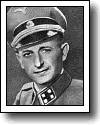 |
Adolf Eichmann (1906-1962) was instrumental in implementing the Final Solution, organizing transports of Jews from all over Europe to the killing centers. As SS lieutenant colonel and head of IVB4, the Jewish department of the Office for Reich Security, Eichmann served as secretary at the Wannsee Conference. He was arrested at the war's end in the American zone of Germany, but escaped to Latin America and disappeared. In 1960, members of the Israeli Secret Service discovered Eichmann in Argentina and through a covert action, transported him to Israel for trial. In December, 1961, Eichmann was sentenced to death and executed in Jerusalem.
|
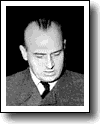 |
Hans Frank (1900-1946) Governor-General of occupied Poland from 1939 to 1945. A member of the Nazi Party from its earliest days and Hitler's personal lawyer, he announced, "Poland will be treated like a colony; the Poles will become slaves of the Greater German Reich." By 1942, more than 85% of the Jews in Poland had been transported to extermination camps. Frank was tried at Nuremberg, convicted, and executed in 1946.
|
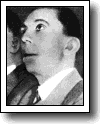 |
Joseph Goebbels (1897-1945)
|
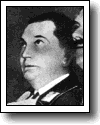 |
Hermann Göring (1893-1946)
|
 |
Rudolf Hess (1894-1987) was the mentally unstable number three man in Hitler's Germany. He is best known for a surprise flight to Scotland in 1941. He was sentenced to life in prison at Nuremberg. He died in jail in 1987.
|
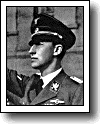 |
Reinhard Heydrich (1904-1942) became the chief of the SD. His more notorious achievements included the establishment of ghettos in Poland, his leadership of the Einsatzgruppen, and the convening of the Wannsee Convention. His assassination in 1942 caused merciless German reprisals, continuing after his death the terror and intimidation that characterized his life.
|
 |
Heinrich Himmler (1900-1945)
|
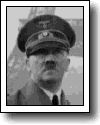 |
Adolf Hitler (1889-1945)
|
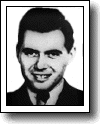 |
Joseph Mengele(1911-1978?) SSphysician at Auschwitz, notorious for pseudo-medical experiments, especially on twins and Gypsies. He "selected" new arrivals by simply pointing to the right or the left, thus separating those considered able to work from those who were not. Those too weak or too old to work were sent straight to the gas chambers, after all their possessions, including their clothes, were taken for resale in Germany. After the war, he spent some time in a British internment hospital but disappeared, went underground, escaped to Argentina, and later to Paraguay, where he became a citizen in 1959. He was hunted by Interpol, Israeli agents, and Simon Wiesenthal. In 1986, his body was found in Embu, Brazil.
|
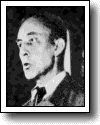 |
Jürgen Stroop (1895-1951) was the SS major general responsible for the destruction of the Warsaw ghetto in 1943. Later that year, as Higher SS and Police Leader in Greece, he supervised the deportation of thousands of Jews from Salonika. He was sentenced to death and executed in Poland in 1951.
|
Visit the Resource section to view photographs of the defendants at the Nuremberg Trials.
Many photographs related to the Nuremberg Trials from the Wiesenthal Center site.
Interactive quiz on Perpetrators.
Lesson plans, discussion questions, term paper topics, reproducible handouts, and other resources for teaching about perpetrators are available here.
Produced by the Florida Center for Instructional Technology,
College of Education, University of South Florida © 1997-2013.